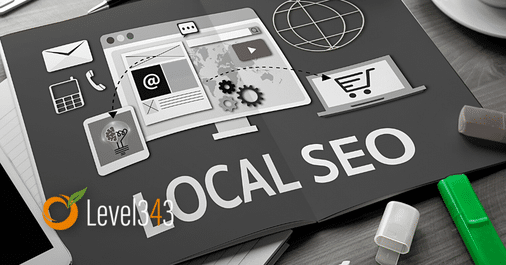When I set out to write about local SEO tips, I wasn’t sure how to approach the article. But then I went down the path of storytelling, which always gets me going… I had recently moved to a new state and was looking for a day spa. After asking for local recommendations from my neighborhood on social media and all the various apps things didn’t pan out, I took to my local Google guide. I found four of them just blocks from my gym, all within walking distance of my house.
None would take walk-ins; they were available by appointment only. Here’s a rundown of what happened when I tried to book an appointment:
- Two redirects to another number that was answered via voicemail with no further information about whose number it was
- One website with only a homepage that contained an inactive phone number and an offer dated for October of last year
- One website with information that was last updated 5 years ago
- One link to a website that turned out to be a personal Facebook profile containing no information about spa or massage services
Upon further investigation, I learned that each of these is a current, active business in my local community.
This is inexcusable.
Although the town I’d moved to was relatively small, it was less than 10 miles from a major city with a population in the tens of millions. I ended up booking something that was an inconvenient distance from where I lived, and four businesses within my immediate community lost a customer.
If this doesn’t illustrate the importance of updating information for local SEO, I don’t know what does.
What is local SEO?
Local SEO is a way of optimizing community business listings on the internet. It’s the best way to reach people within your community who are looking for services. Done right, it’ll tie mobile search, Google maps, customer reviews, and traditional websites together so that your local audience can find you, learn more about your business, and book appointments.
Many small business owners are working with meagre marketing budgets and little expertise. They figure if they slap up a website, that’s the end of it.
Just existing on the internet means business will come pouring in, right?
How to Increase Your Local SEO Results
Building a website is only the first step toward optimization. Google algorithms are constantly changing, and old best practices aren’t enough to help you rank. It only takes 0.05 seconds for visitors to get an impression of your business.
Would your website pass that test?
It’s time to update your Local SEO if:
You’re Ranking Low in Search Results
Have you Googled your business lately? Do it now and see where – or if – it ranks. The fact is, 75 percent of consumers never look beyond the first results page; most don’t go further than the first five listings.
The higher your Google score, the higher you’ll rank in search results. There are free tools to check this information. If you score low, you can try some of these tricks to boost your SEO and claim your rightful place in the SERPs (Search Engine Results Pages):
- Link building
- Adding menu categories
- Using a combination of long tail and single keywords
- Adding more written content, such as a blog or knowledge base
- Using alt-tags for indexing photos or video content
- Making sure all content is accurate and uses proper spelling/grammar
There are several ways you can increase your local reach and SEO results. You want to make it easy for local customers to find you, so here are some straightforward ways to do that.
Create a Google Business Profile
If you want Google to find you, it’s a good idea to use their tools. Setting up a Google business profile alerts the Google algorithms to your presence, and it’s very simple to do.
You set up a Google Business Profile, verify it, add it to Google maps, and then you can manage the information for your business that shows up on Google. It’s one of the simplest ways to start benefiting from local SEO results.
Make a Complete Profile
The more information you include on your profile, the better the results.
- Include the address and zip code since many GPS systems rely on that for directions.
- Include your hours of operation so people don’t need to phone and ask.
- Include a phone number.
- Include FAQs like services, products, whether an appointment is required, cancellation policy and any other information to make it easy for customers to do business with you.
- If you publish a blog, make sure you add it to your GMB page.
Add Your Location to Your Website
You do have a website, right? In addition to your Google Business Profile, adding location information to your website can help boost your visibility. Using NAP (name, address, phone number) for your localization is a must. Your location must include:
- Headings
- Text in the body of your website
- Meta descriptions
- Title
- Footer
Optimize Your Site for Mobile
The way customers access business information isn’t the same as it used to be. Chances are that, the initial search and first contact are performed from a smartphone. Then, they might go to their laptop or PC to perform research or look at your website. Your design should be responsive, which means it looks and performs the same way no matter what device or screen size is used to view it. Google has also gone to mobile-first when it comes to indexing content.
Fact are 63% of internet searches are now conducted on mobile devices. If your site doesn’t display properly on a mobile device, customers can become frustrated and move on.
Ask for Online Reviews
Once you have verified your Google profile, start asking for online reviews and testimonials from customers. You can also ask to include their feedback on websites or other marketing materials like banner ads that they see when browsing in-store at any store where you sell items through its website interface.
The process of increasing local SEO results starts by – verifying the account before getting started with improving it’s rank higher than what is already present currently so as not just focus all efforts towards having better rankings but rather improve customer experience too which will naturally draw more traffic into stores who then will love your store and want to give you a good review.
We’ve asked all our clients that have a brick and mortar to leave a “how did we do? question box at their counter. This confirms to clients they’re valued, and it’s easier to ask them for an online review if they see how much it matters in your stores.
Use the Right Keywords
The days of stringing keywords together are gone. That strategy will get you booted from SEO results completely.
You need to spend some time considering what your business does, and how your customers might search for you. For example, if you are a bakery, people might search for bakery, but also custom cake design, cake design, wedding cakes or other variations. Semantic search needs to be added to your strategy. Remember it’s no longer about keywords, but about every other supporting document you have on your website. We discuss more about semantic search here.
Many people search in the form of a question, so adding an FAQ section is an easy way to add keywords and valuable information for your customers. Two goals, one place.
Include Local Flavour
Add some local spice to your content. Is your neighbourhood one that the locals will recognise? Are you close to landmarks? What about local events or festivals you can participate in? Including local information can boost your local search results.
Google search focuses on intent and relevance to deliver search results. The algorithms consider not only the words used for the search, but results from previous searches for similar keywords.
Natural language processing (NLP) combines artificial intelligence, linguistics, and computer science. It considers how people converse, and not only the words but the context. After all, “cookie” means very different things to a baker and a coder.
One way to add relevance and boost your visibility to Google is by adding a blog to keep the content current and provide added value to your customers. You don’t have to post often, even a couple of times a month can keep your content fresh. The posts don’t have to be long.
Conclusion
There are a more local SEO tips that have proven to be effective, just make sure its updated information about your business location, phone number, and website or mobile app(s). Moz provides detailed information about local SEO best practices to help you get it together. Here’s a quick checklist you can use as well:
- List keywords you want to rank for
- Incorporate keywords into your web content and landing page
- Optimize your website for mobile first indexing, which is a fairly new Google requirement
- Update or purchase an SSL certificate; many hosting services will give you a free one
- Make sure to work on link building
- Update your Google My Business listing and obtain customer reviews
- Create regular, relevant evergreen content
- Monitor analytics to track your results
In the digital age when mobile use is surpassing traditional web browsing, optimizing your marketing efforts for local SEO is crucial. It doesn’t take much more than following the above local SEO tips, and you’ll get a higher ROI for your efforts. You want to build your business, you need to be discovered, adding local SEO to your marketing strategy is time worth investing in.



































